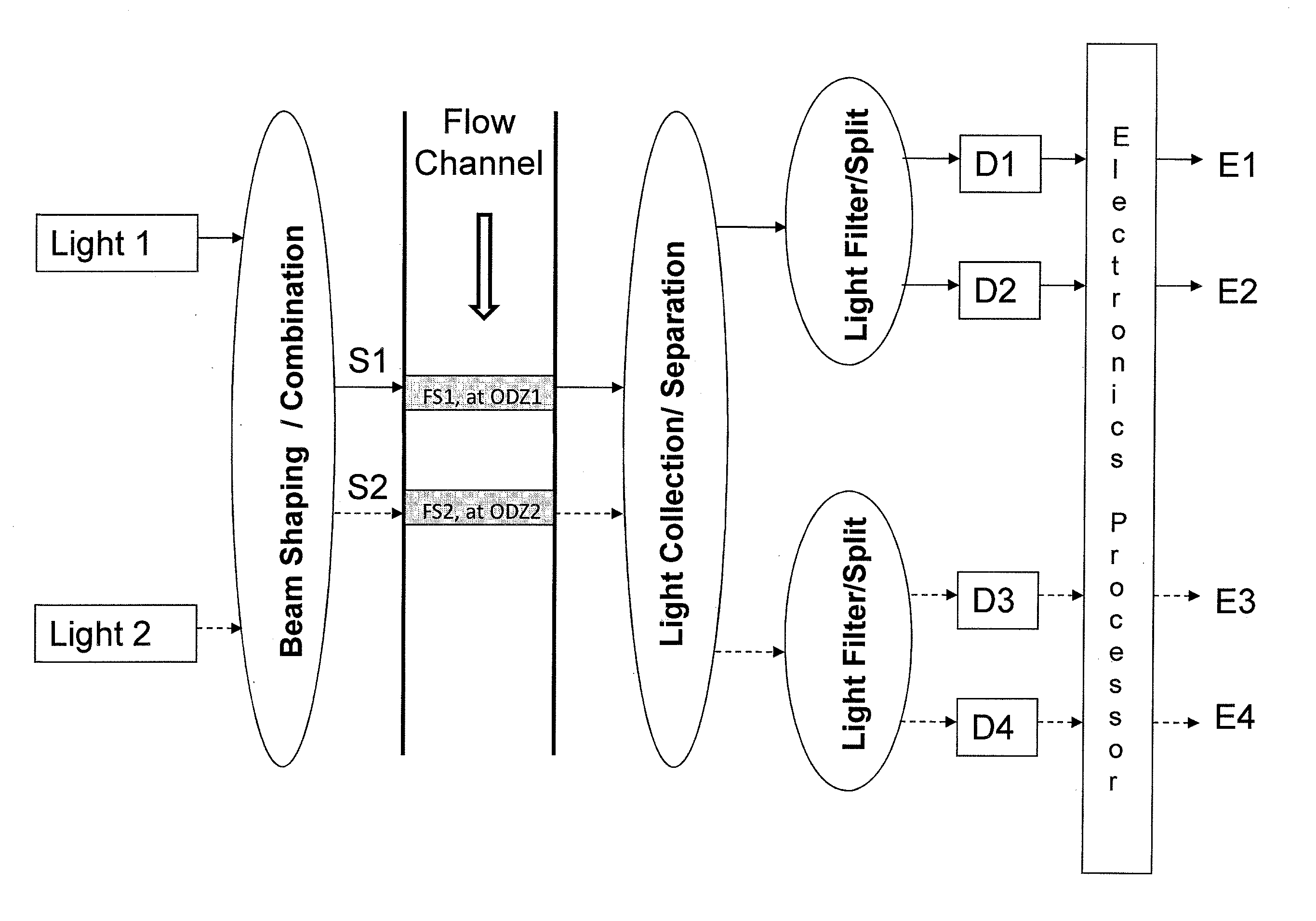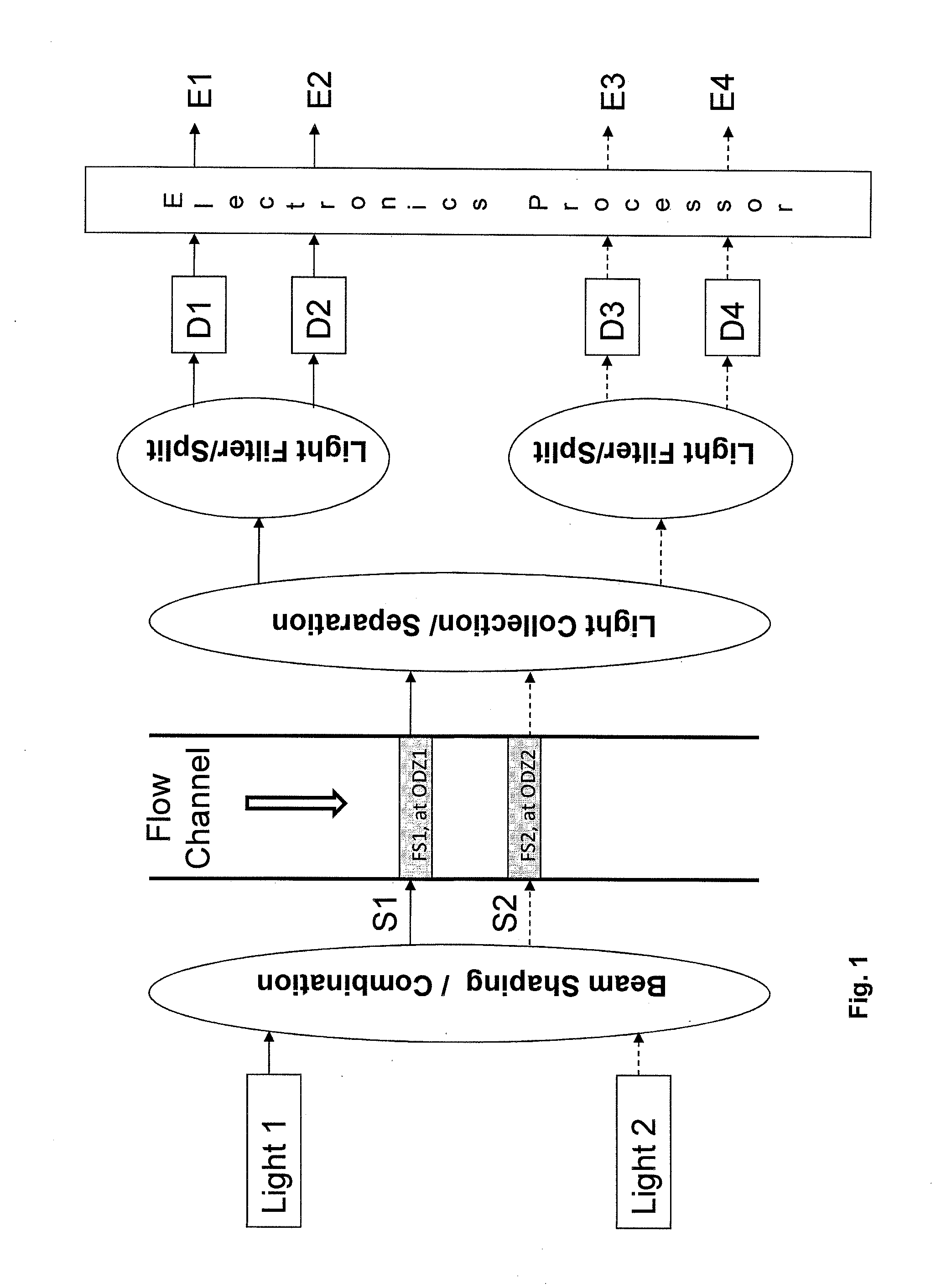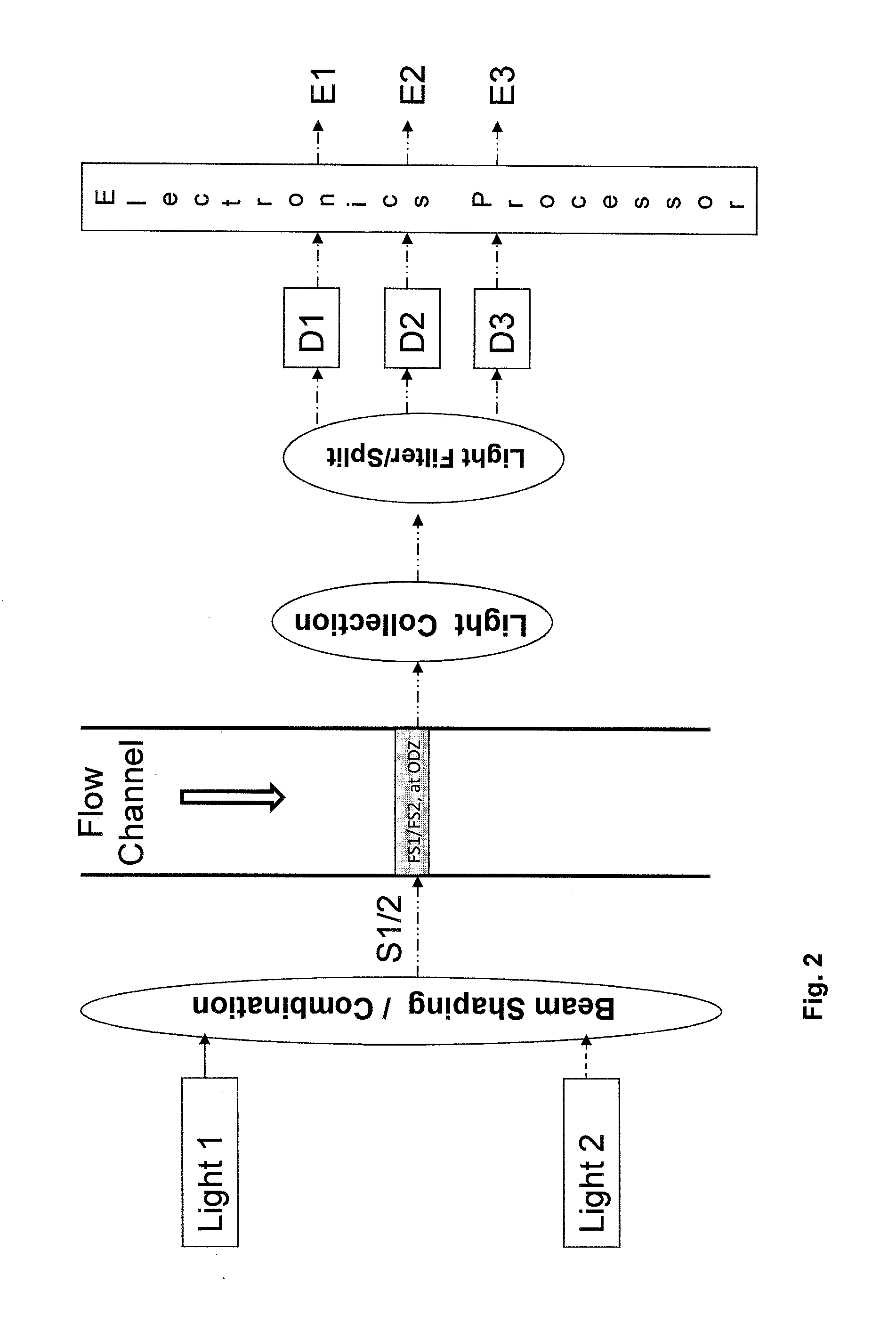System and method for detecting multiple-excitation-induced light in a flow channel
a flow channel and multiple excitation technology, applied in the field of detection light, can solve the problems of unreliability of signal measurement results, first approach has several limitations, and the flexibility of choosing the fluorochrome for cell staining, so as to reduce the complexity of electronic-processor sub-systems, minimize or very low the probability of two particles/cells being both within two oizs, and minimize interference or crosstalk.
- Summary
- Abstract
- Description
- Claims
- Application Information
AI Technical Summary
Benefits of technology
Problems solved by technology
Method used
Image
Examples
example 1
Two Intensity-Modulated Light Sources
[0054]Below we will discuss some examples of modulation and de-modulation methods. For example, light beam directed to OIZ1 is modulated by a sine-wave signal at a frequency f1 and phase value zero (i.e. Mod1=sin(2πf1t)+1) and light beam directed to OIZ2 is modulated by a sine-wave signal at a frequency f2 and a phase value φ2(i.e. Mod2=sin(2πf2t+φ2)+1)). The first modulation signal Mod1 has a phase value of zero and its phase is used as a reference for all signals in the system. Thus, the second modulation signal Mod2 has a phase value of φ2. Total electronic signals Total_Signal from a photodetector is the sum of the signal associated with emitted light from OIZ1 (Sig1) and OIZ2 (Sig2), respectively, and can be expressed as,
TotalSignal=Sig1+Sig2=S1(t)(sin(2πf1t+ϕ3)+1)+S2(t)(sin(2πf2t+ϕ4)+1)(1)
where S1(t) and S2(t) are output electronic signal from the photodetector due to particles / cells passing through the 1st OIZ and the 2nd OIZ, respectively...
example 2
One Intensity-Modulated Light Source and One Non-Modulated Light Source
[0067]In above sections, both light beams are modulated and single-component de-modulation and quadrature demodulation methods are used to recover corresponding electronic pulse profiles from the modulated signals. In following examples, we consider the cases where one light beam is not modulated and modulation is applied to the other light beams. We perform exemplary analysis for the case of two excitation sources where light beam directed to OIZ1 is modulated by a sine-wave signal at a frequency f1 and phase value zero (Mod1=sin(2πf1t)+1) and light beam directed to OIZ2 is not modulated. Total electronic signals Total_Signal from a photodetector is the sum of the signal associated with emitted light from OIZ1 (Sig1) and OIZ2 (Sig2), respectively, and can be expressed as,
Total_Signal=Sig1+Sig2=S1(t)(sin(2πf1t+φ3)+1)+S2(t) (8)
where S1(t) and S2(t) are output electronic signal from the photodetector due to partic...
example 3
Two Intensity-Modulated Light Sources at Same Modulation Frequency and Different Modulation Phases
[0078]In above examples, modulation applied to different light sources has been based on differences in modulation frequency (f1 and f2 in equation (1)) and in amplitude (1 for modulation S1(t) and 0 for S2(t) in equation (8)). Modulation of different light sources could also be based on phase angles of the modulation signals but with the same modulation frequency. Light beam directed to OIZ1 is modulated by a sine-wave signal at a frequency f1 with phase angle 0 (i.e. Mod1=sin(2πf1t)+1) and light beam directed to OIZ2 is modulated by a sine-wave signal at the same frequency f1 but with a phase angle θ (i.e. Mod2=sin(2πf1t+θ)+1). Total_Signal from a photodetector is the sum of the signal associated with emitted light from OIZ1 (Sig1) and OIZ2 (Sig2), respectively, and can be expressed as,
Total_Signal=Sig1+Sig2=S1(t)(sin(2πf1t)+1)+S2(t)(sin(2πf1t+θ)+1) (13)
where S1(t) and S2(t) are outp...
PUM
| Property | Measurement | Unit |
|---|---|---|
| wavelengths | aaaaa | aaaaa |
| wavelengths | aaaaa | aaaaa |
| wavelengths | aaaaa | aaaaa |
Abstract
Description
Claims
Application Information
 Login to View More
Login to View More - R&D
- Intellectual Property
- Life Sciences
- Materials
- Tech Scout
- Unparalleled Data Quality
- Higher Quality Content
- 60% Fewer Hallucinations
Browse by: Latest US Patents, China's latest patents, Technical Efficacy Thesaurus, Application Domain, Technology Topic, Popular Technical Reports.
© 2025 PatSnap. All rights reserved.Legal|Privacy policy|Modern Slavery Act Transparency Statement|Sitemap|About US| Contact US: help@patsnap.com



